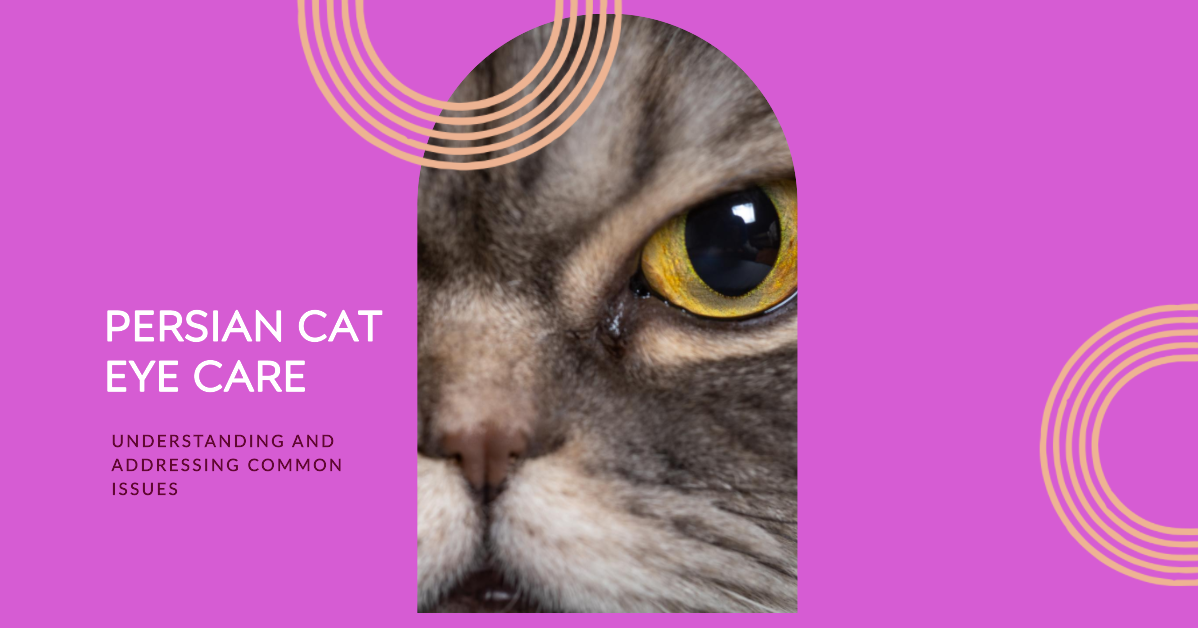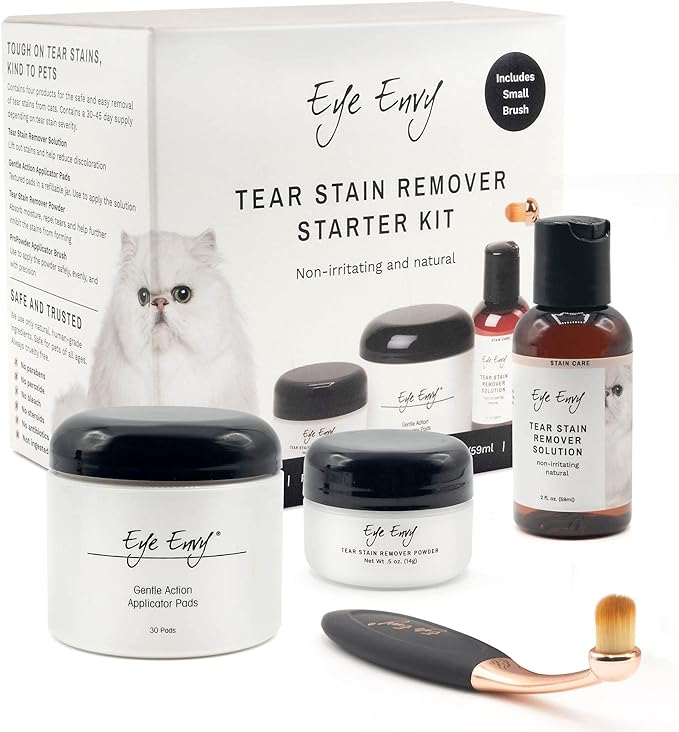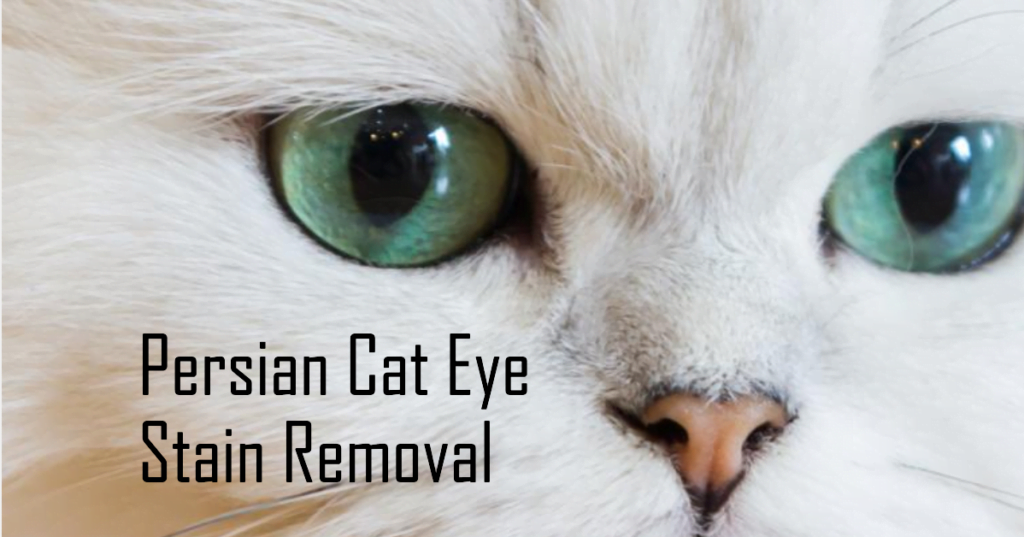This post features affiliate links, and we may receive a commission if you choose to make a purchase through them. Thank you for your support
🐱👁️ Introduction to Persian Cat Eye Characteristics
Persian cats, with their captivating, large, and expressive eyes, are the stars of feline charm. In this comprehensive guide on Persian cat eye care, we’ll not only admire their beauty but also address the common eye issues these cats face and how to effectively manage them.
From the roundness to the array of stunning colors, their eyes are a spectacle of expressiveness and allure, enhanced by their unique brachycephalic structure. As we decode the emotions conveyed through these expressive eyes, we’ll also dive into practical care routines to maintain their health and vibrancy.
Important: Don’t miss our engaging quiz at the end of this guide. It’s a playful way to test your newfound knowledge and journey through the intricacies of Persian cat eye care!

🐱🔬 Are Persian Cat Eye Problems Common?
Yes, Persian beauties do have a higher tendency for eye issues that demand a bit of extra vigilance.
Common Culprits
- Epiphora: Much like a movie marathon of tearjerkers, this condition involves tears that don’t follow their usual escape route, leaving the eyes wetter than a splash zone. This constant wetness isn’t just a cosmetic issue—it’s a prime breeding ground for infections by viruses, bacteria, and fungi.
- Exophthalmos: When their eyeballs protrude more than is typical, it can lead to discomfort and a greater risk of complications like corneal edema. Imagine your eye being like a balloon slightly too inflated; it’s not going to be comfortable!
- Entropion: This is like having an irritating tag on your shirt that keeps scratching; except, it’s your eyelids causing the discomfort. This irritation from inward-turning lashes can lead to excessive tearing and inflammation, setting the stage for more serious infections.
And then there’s the big G—Glaucoma. Not as common, but when it shows, it’s like a critical software bug that needs expert attention to prevent serious damage.
Signs to Watch For: Keep an eye out for symptoms like discolored discharge, excessive blinking, or red, inflamed eyes—these are your clues to power up your vet-seeking sensors.
Persian Cat Eye Problems by Severity and Frequency
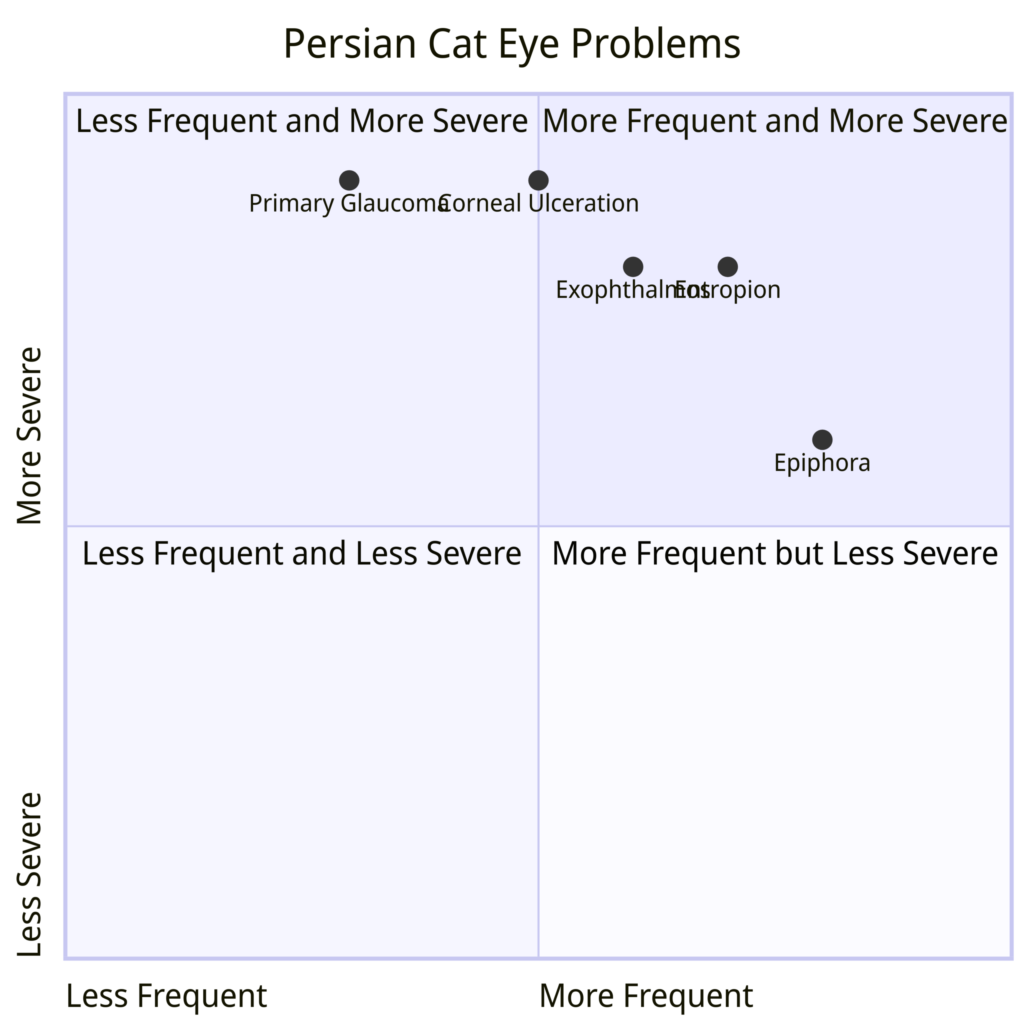
- Epiphora (Tear Overflow)
- Severity: Moderate. While it’s not directly harmful, it can lead to skin infections and other complications if not addressed.
- Frequency: High. Many Persian cats experience this due to their facial structure.
- Exophthalmos (Protruding Eyeball)
- Severity: High. It can cause discomfort and lead to other complications.
- Frequency: Moderate. Not all Persian cats experience this, but it’s not rare.
- Entropion (Eyelids Turning Inward)
- Severity: High. This can cause significant discomfort and lead to corneal damage.
- Frequency: Moderate to High. It’s a known issue in some Persian cats.
- Primary Glaucoma
- Severity: Very High. Glaucoma can lead to blindness if not treated.
- Frequency: Low to Moderate. While it’s a serious condition, it doesn’t affect a majority of Persian cats.
- Corneal Ulceration
- Severity: Very High. Can lead to significant pain and potential vision loss.
- Frequency: Moderate. It can result from other conditions like entropion.
Can Persian Cat Eye Issues be Hereditary?
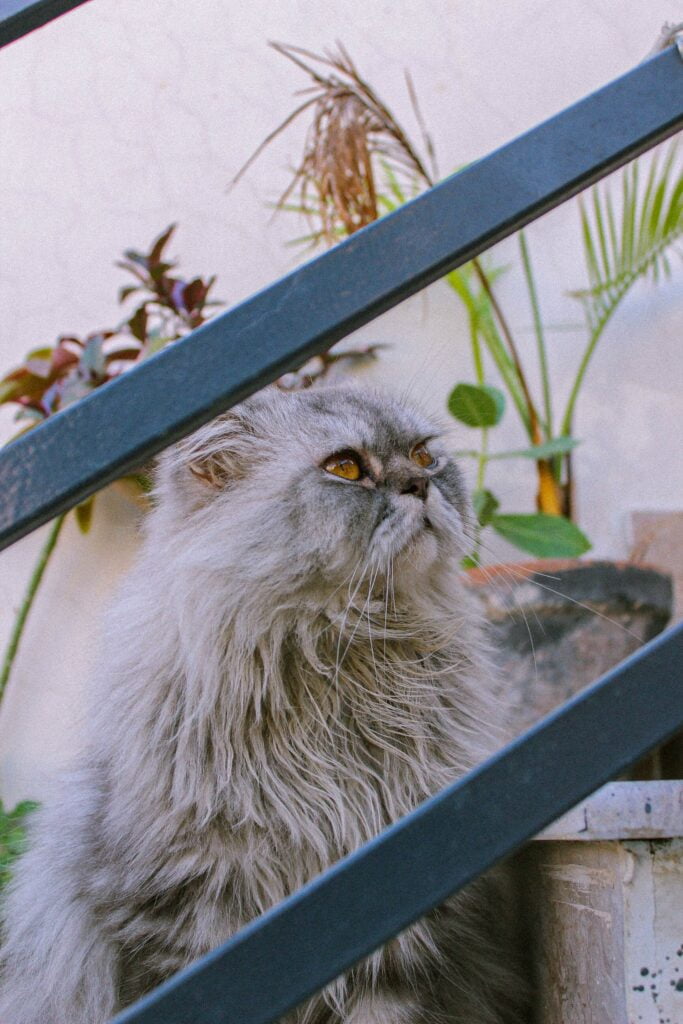
Some of the eye quirks Persians are known for can be traced back to their DNA. Their unique breed characteristics and genetics play a role in predisposing them to certain eye conditions. While we’ve touched upon conditions like Epiphora, Exophthalmos, and Entropion earlier, it’s worth noting that these can be passed down through generations.
Diving deeper into the genetic pool, Persians have a specific form of progressive retinal atrophy (PRA-pd). This condition, inherited in a particular pattern, affects both male and female Persians equally, causing vision problems.
Another intriguing chapter in the Persian eye saga is the condition called corneal sequestra. This is a standout in the list of hereditary concerns, making its mark as a common breed-related ocular issue for Persians.
Note: While the allure of those large, round eyes is undeniable, it’s essential to remember that some Persian lines have been selectively bred to accentuate these features even more. While this might enhance their visual appeal, it can sometimes amplify health concerns.
Persian Cat Eye Discharge: Difference Between Normal & Concerning
| Type of Discharge | Appearance | Implications |
|---|---|---|
| Normal | Clear or slightly pinkish | Typical eye discharge, usually harmless. |
| Concerning | Yellow or green tint | Indicates possible infections or underlying health issues. |
Persian cats are more prone to eye discharge. Normally, this discharge should be clear or slightly pink. If you notice a yellow or green tint, it could indicate an infection or other health problem that requires attention.
Why do Cat Eyes Water?
The unique facial blueprint of Persian cats, while being their signature charm, has a little quirk. Their tears, instead of taking the usual exit route, often opt for a scenic detour. This results in those watery trails that sometimes leave a mark on their fur.
This isn’t just a cosmetic concern. The moisture can sometimes be a tad too inviting for some unwanted microscopic guests. And while we’ve touched upon the likes of Epiphora in our previous chat, it’s worth noting that this condition is a prime reason behind the tear overflow. It’s like a little glitch in their tear drainage system.
Interestingly, not all Persians have the same tear frequency. Some might need a dab or two throughout the day, while others are more low-maintenance, requiring occasional care.
Important: To keep those teary trails clean and clear, a gentle wipe with warm water or a recommended solution can be a game-changer.
The Relationship between Persian Cat Diet and Eye Care
Diet and vision are intricately connected, especially for our Persian pals. It’s not just about maintaining their silky coats or energy levels; it’s directly about preserving those enchanting eyes we so adore.
Essential Nutrients
Certain nutrients are paramount for optimal eye health. Taurine, an essential amino acid, plays a pivotal role in retina function. Without adequate taurine, our Persians could face deteriorating vision. Likewise, Vitamin A deficiency could dim their vibrant view, leading to night blindness.
Antioxidant Armor
Just as our devices have protective cases, antioxidants serve as a protective shield for our feline’s eyes. They combat oxidative stress, which, if unchecked, can cloud their lenses.
Balanced Plate
A well-balanced diet, rich in animal protein, essential fats, and specific vitamins, not only keeps our Persians in top shape but also acts as a preventive measure against several eye conditions. It’s not about fancy food brands, but the right nutritional balance.
The Ideal Nutritional Split
Animal protein is paramount, and should constitute at least 50% of their diet. Sources like chicken and fish are vital not just for overall vitality but specifically for maintaining clear eyes.
Fats should be kept around 20%, aiding in both eye and brain development, while also enhancing their coat’s sheen. Carbohydrates, mainly from veggies like sweet potatoes and broccoli, should be limited, ideally below 3%, providing essential vitamins and fiber for optimal health.
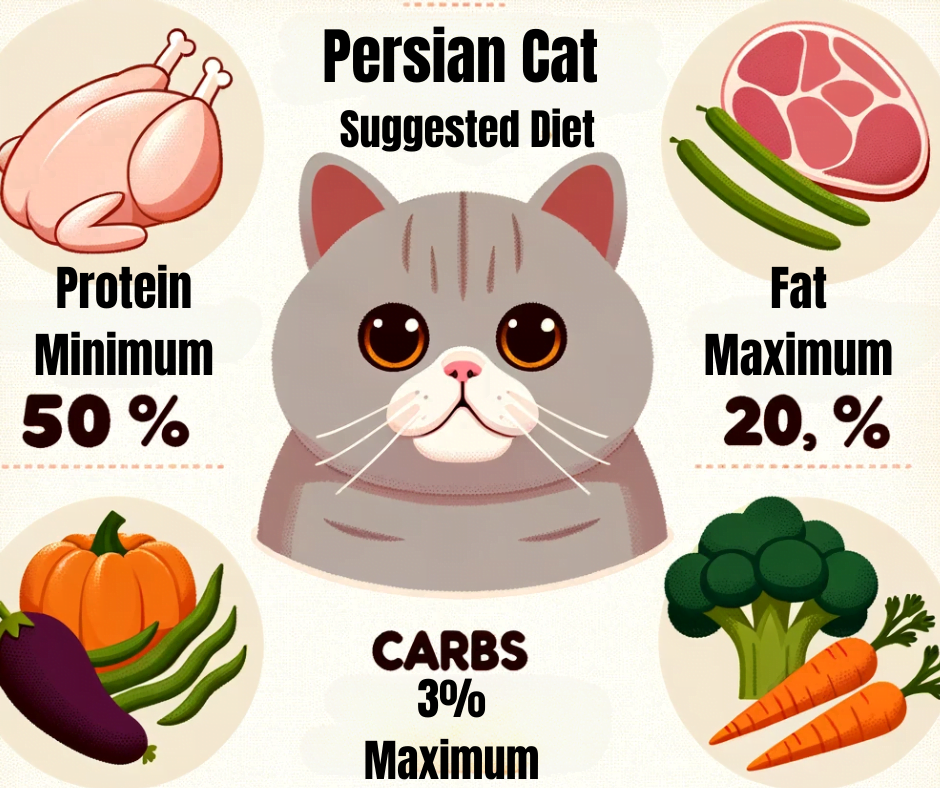
While Persian kittens and their adult counterparts share a love for a high-protein, low-carb feast, it’s essential to recognize their unique dining needs. Young Persians, in their sprightly growth phase, have a hearty appetite, demanding more calories relative to their body weight.
How to clean Persian cat tear stains?
Persian cat eyes might give your feline a poetic appearance, but it’s essential to keep those eyes clean and stain-free. Here’s how you can ensure those eyes remain as captivating as ever:
Essential Tools for Safely Cleaning Persian Cat Eyes
Before you start, ensure you have the right tools. Quilted cotton makeup pads are ideal for the job. They’re gentle yet effective, ensuring a safe and thorough cleaning. Remember, it’s always best to avoid pads with fluffy fibers that might irritate those delicate eyes.
Guide to Gently Cleaning Your Persian Cat’s Eyes
With your chosen pad dampened in lukewarm water, gently wipe the tear-stained area around your cat’s eyes. This gentle cleaning can be done as often as needed to keep those eyes sparkling.
Choosing the Best Tear Stain Removers for Persian Cats
For those persistent stains, consider using specialized tear stain removers like Eye Envy Tear Stain Remover Products or other high-quality persian cat eye cleaners. These products are designed to tackle stubborn stains and offer protection against potential infections.
How to Dry Your Persian Cat’s Eyes Post-Cleaning
After the cleaning session, it’s crucial to dry the area. Use a clean, dry cotton pad or a soft towel to pat the area gently. This step ensures that no residual moisture remains, which could attract dirt.
Preventing Future Tear Stains
To keep those eyes looking their best in the future, think about using a dedicated eye powder. It’s like a protective barrier, ensuring those tear trails don’t leave their mark.

What breeds have similar eye characteristics to Persian cats?
Persian cats are renowned for their distinct facial features and enchanting eyes, a trait shared by other brachycephalic (flat-faced) cat breeds. These breeds often encounter similar eye care needs due to their unique anatomy.
- Himalayan Cats: Close relatives of Persians, Himalayans share the same distinctive eye shape and often feature striking blue eyes. Like Persians, they require regular eye cleaning to prevent tear staining.
- Exotic Shorthair: This breed is essentially the shorthaired version of the Persian, with the same flat face and large, round eyes. They are prone to conditions like tear staining and require daily eye cleaning to prevent buildup and infections.
- British Shorthair: Known for their chunky cheeks and big, round eyes, British Shorthairs share the Persian’s tendency for eye issues such as tear duct problems. Consistent eye care is crucial to keep their charming gaze clear.
- Burmese: These cats have a more moderate brachycephalic shape, but their big, expressive eyes are set in a broad face, making them prone to some of the same eye issues as Persians.
- Scottish Fold: While not as flat-faced as Persians or Exotics, Scottish Folds often have slightly pushed-in facial structures. Their folded ears and large, round eyes give them a similar look, necessitating regular eye checks to monitor for dryness and irritation.
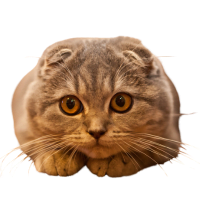
🐱🌈 Persian Cat Eye Color Evolution: Do They Change as They Age?
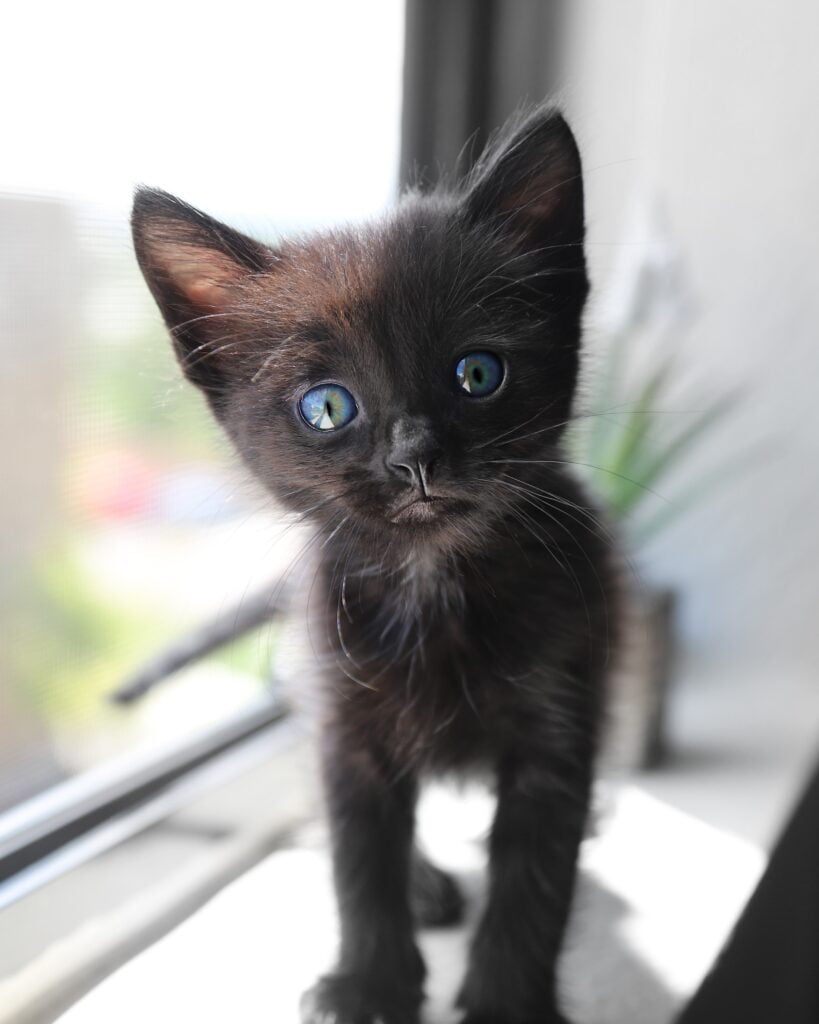
Persian kittens, much like their feline counterparts, undergo an eye color transformation during their initial weeks. While many kittens reveal their definitive eye color by the age of 3 weeks, Persian kittens have their unique timeline.
The transition in the eye color of Persian cats typically starts around 6 to 8 weeks. By the time these fluffy felines reach 6 months, their eyes gleam with their permanent hue.
So, if you’re documenting the growth journey of your Persian kitten and notice a shift in their eye color, it’s a natural part of their development. This change in eye color in the early months is a characteristic feature of Persian cats, making them even more intriguing.
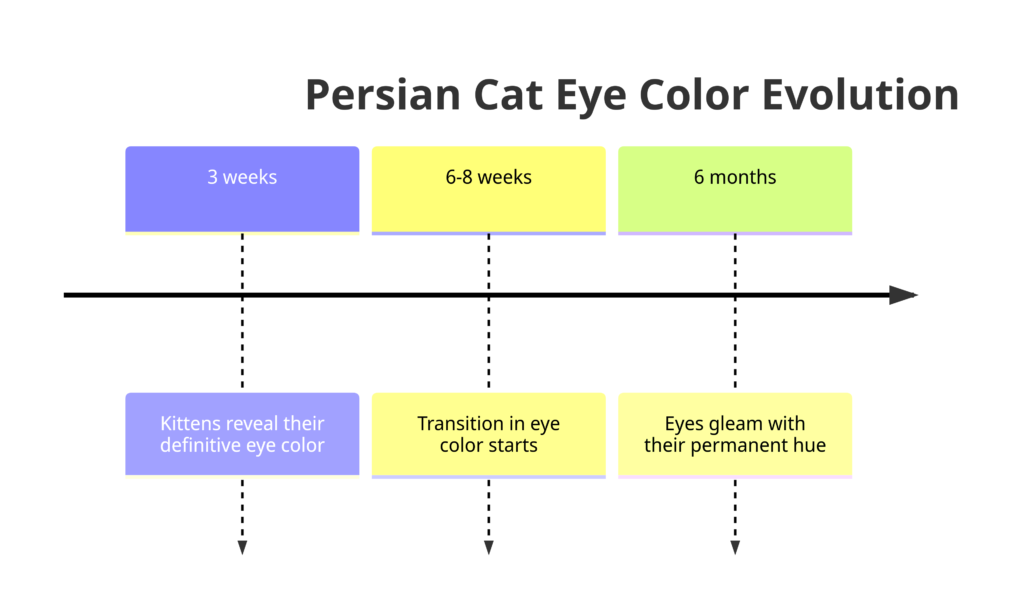
Are Persian cat eye colors linked to their coat colors?
Unlike some breeds, such as the Siamese, where there’s a clear connection between coat and eye color, Persian cats march to the beat of their own drum. These regal felines can flaunt a spectrum of eye colors, from mesmerizing blue and enchanting green to rich copper. And for those who love a touch of the unexpected, some Persians even sport odd-eyed charm, where each eye is a different hue.
So, what’s the science behind those captivating eyes? It all boils down to melanocytes. These are the cells responsible for producing melanin, the pigment that colors the eyes. Cats with a high count of melanocytes often have gold or orange eyes. On the flip side, those with fewer melanocytes might have green or yellow eyes. And for the blue-eyed beauties? That’s the result of a complete absence of melanocytes.
Now, while a Persian’s coat color, be it solid, tabby, tortoiseshell, or colorpoint, might accentuate their eye color, there’s no direct correlation between the two. Each Persian cat is truly a unique masterpiece, with their coat and eye colors painting a distinct portrait of their individuality.
Expert Persian Cat Eye Care Quiz: Test Your Knowledge Now
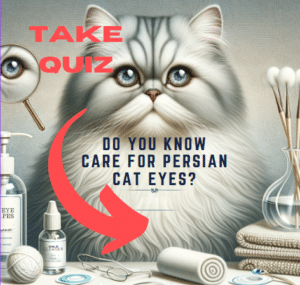
🐱💡 Conclusion: The Essentials of Persian Cat Eye Care
Diving into the world of Persian cat eye care, we’ve uncovered that these felines, come with their own set of unique features and requirements. Their captivating eyes, diverse in color and prone to certain conditions, demand specialized attention.
From decoding the relationship between their coat and eye colors to establishing a routine for maintaining those expressive eyes, it’s evident that knowledge is power. Just as we’d regularly update our software, consistent check-ups and vigilance are crucial for your Persian’s eye health.
If you’re looking for more insights on gadgets and health for cats, be sure to explore Sweet Purrfections. Here’s to ensuring your Persian’s eyes remain clear and healthy, and to the joy they bring into our lives!

